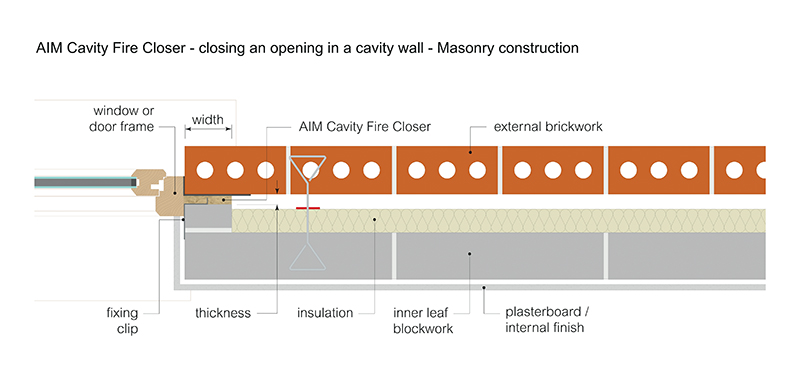
When it comes to protecting your home from heat loss and dampness, cavity closers play a crucial role. These simple yet effective building components are essential for maintaining the thermal efficiency and structural integrity of your property. In this ultimate guide, we will delve into the importance of cavity closers, how they work, and why you need to ensure they are properly installed in your home.
What are Cavity Closers?
Cavity closers are insulation materials or components designed to fill the gaps between the inner and outer layers of a cavity wall. These gaps, also known as cavities, are left during the construction of a property to provide additional insulation and prevent moisture from seeping into the building structure. However, these cavities can also become pathways for heat loss and dampness if not properly sealed.
Types of Cavity Closers:
- Rigid Insulation Boards: These are solid insulation boards made from materials such as expanded polystyrene (EPS) or extruded polystyrene (XPS).
- Cavity Closers with Damp Proof Membrane: Some cavity closers come with an integrated damp proof membrane to provide an additional barrier against moisture.
- Flexible Cavity Closers: These are typically made from materials like mineral wool and can be shaped to fit irregular cavities.
Importance of Cavity Closers
Cavity closers play a crucial role in the overall thermal performance and moisture management of a building. Here are some key reasons why cavity closers are important:
Preventing Heat Loss:
- Cavity closers help to create a continuous thermal barrier around the building, reducing heat loss through the walls.
- By sealing the gaps in the cavity walls, cavity closers help to maintain a comfortable indoor temperature and reduce heating costs.
Preventing Dampness:
- Properly installed cavity closers help to prevent moisture from entering the building structure, reducing the risk of dampness and mold growth.
- They also help to improve the overall durability of the building by protecting it from water damage.
How Cavity Closers Work
The way cavity closers work is relatively simple yet highly effective. By filling the gaps in the cavity walls, cavity closers create a continuous thermal break that prevents heat from escaping and moisture from penetrating the building envelope. This helps to maintain a comfortable and healthy indoor environment while also reducing energy consumption and carbon emissions.
Installation of Cavity Closers
Proper installation of cavity closers is essential to ensure their effectiveness. Here are some key points to keep in mind when installing cavity closers:
- Ensure the cavity closers are the correct size and shape to fit the cavities in your walls.
- Place the cavity closers tightly against the inner and outer layers of the cavity wall to create a seamless seal.
- Secure the cavity closers in place using appropriate fixings to prevent them from moving or shifting over time.
- Inspect the cavity closers regularly to check for any signs of damage or deterioration and replace them if necessary.
Benefits of Properly Installed Cavity Closers
Properly installed cavity closers offer a wide range of benefits for homeowners. Some of the key benefits include:
Improved Energy Efficiency:
- Reduced heat loss leads to lower energy bills and increased energy efficiency.
- Maintaining a consistent indoor temperature reduces the need for heating and cooling, further lowering energy consumption.
Enhanced Comfort:
- Avoiding drafts and cold spots in the interior of the building creates a more comfortable living environment for occupants.
- Regulating indoor humidity levels helps to prevent condensation and improve air quality.
Long-Term Cost Savings:
- By preventing moisture damage and reducing heat loss, properly installed cavity closers can help homeowners save money on repairs and maintenance in the long run.
- Increased energy efficiency translates to lower utility bills and long-term cost savings.
Conclusion
Ensuring your home is adequately protected from heat loss and dampness is essential for maintaining its structural integrity and the well-being of its occupants. By understanding the importance of cavity closers and how they work, you can take proactive steps to enhance the thermal efficiency and moisture management of your property. Remember to consult with a professional builder or insulation expert to ensure your cavity closers are installed correctly and provide maximum benefits to your home.
